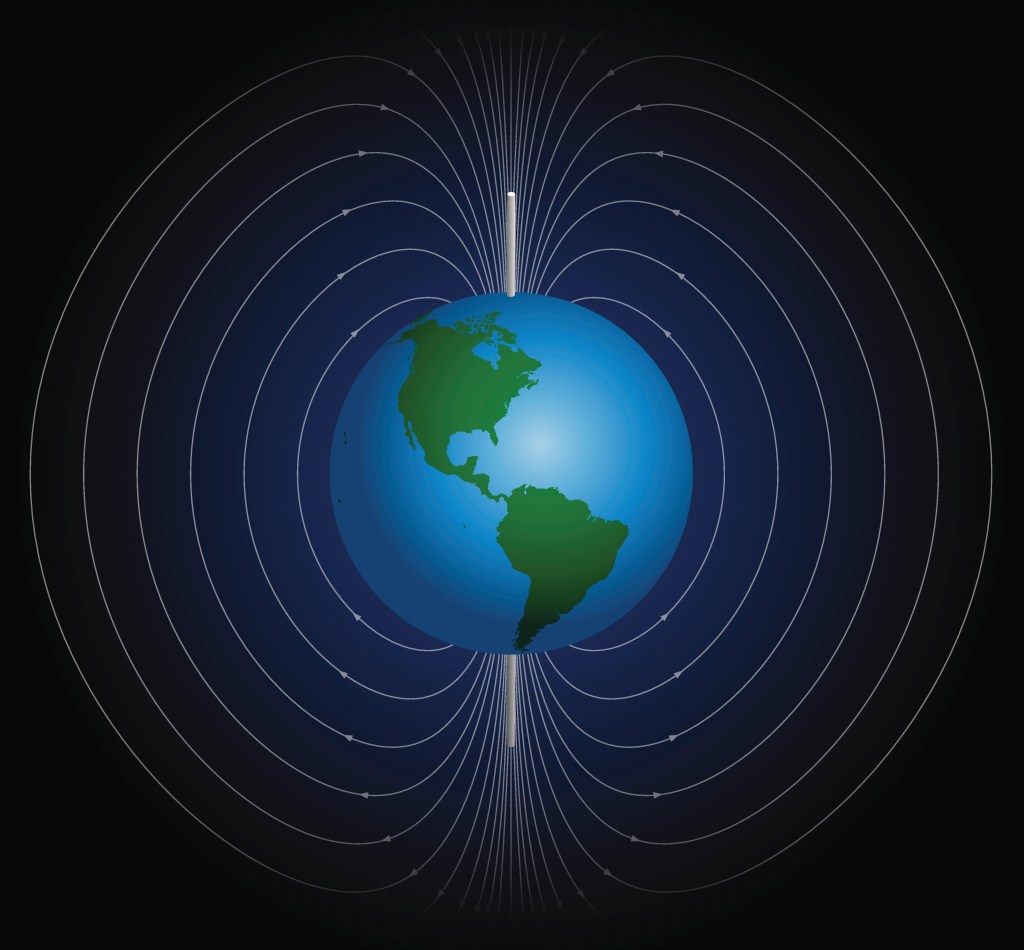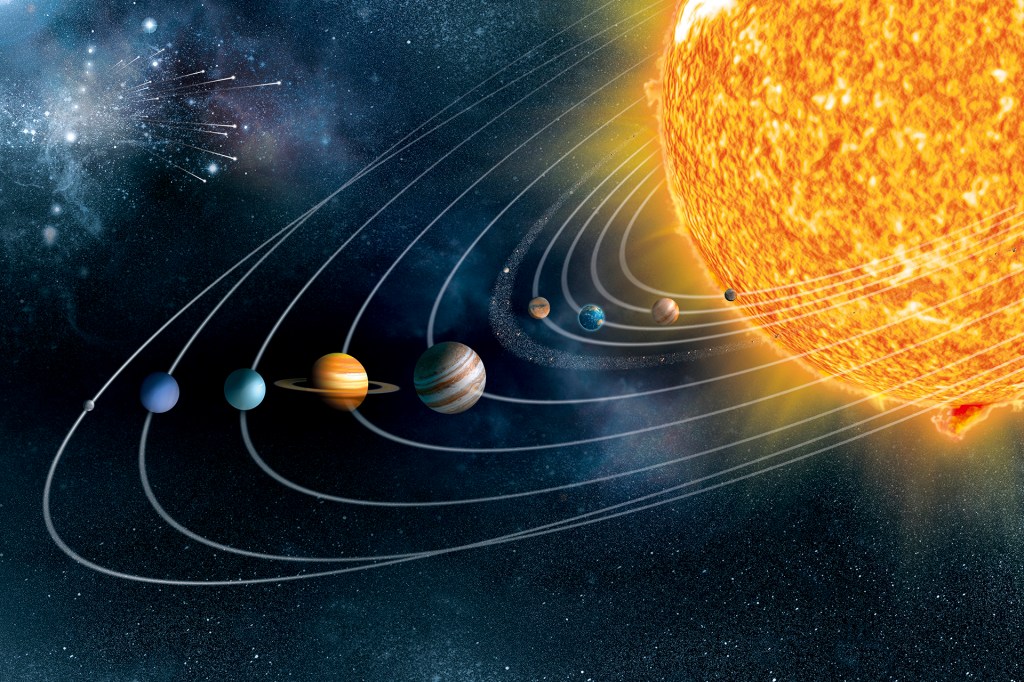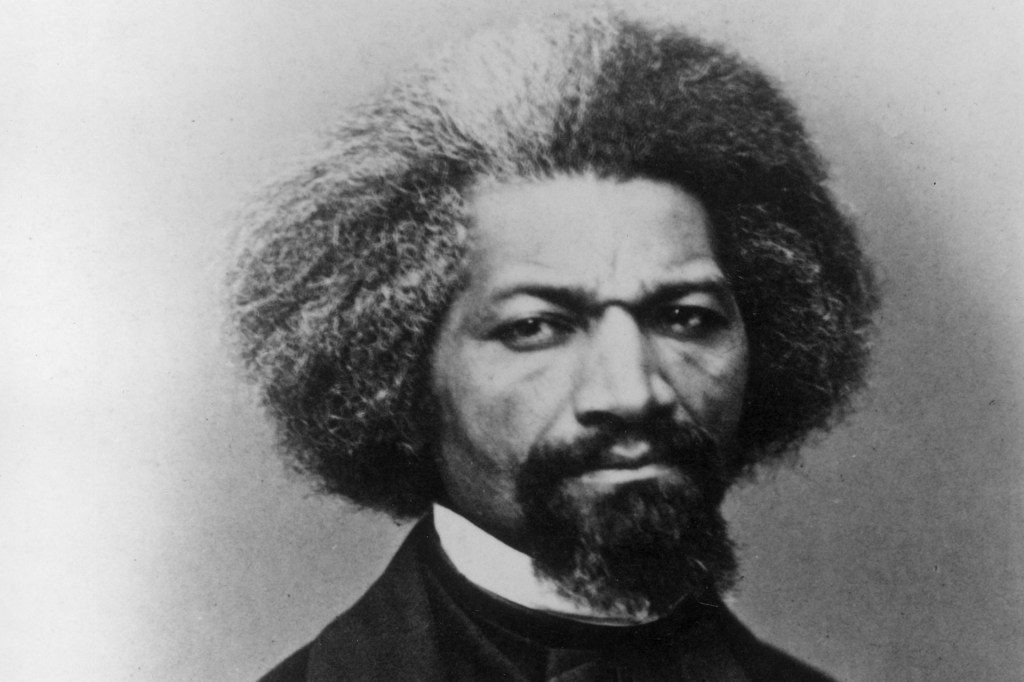What Are Magnets?

What do compasses, fans, and high-speed trains have in common? They all use magnets to function. Magnets are rocks or metals that create an invisible field around themselves. This field attracts other magnets and certain metals. The presence of a magnetic field is why you can cover a metal refrigerator door with magnets.
A magnetic field is concentrated around the ends of magnets. These ends are called poles. All magnets have two poles: a north pole and a south pole. You can feel the magnetic force if you hold two magnets so that their poles are near each other. If the poles are opposite (north and south), you will feel an attraction between the magnets. If the poles are identical (north and north or south and south), you will feel the magnets repelling
repelling
 JESSICA PETERSON/GETTY IMAGES
to force away or apart
(verb)
I was repelled by the smell of her drink.
each other.
JESSICA PETERSON/GETTY IMAGES
to force away or apart
(verb)
I was repelled by the smell of her drink.
each other.
Some materials are naturally magnetic. Lodestone, a rock that is rich in iron, is one example. And certain metals can become magnetic. These include iron, cobalt, and nickel. If you run a nonmagnetic iron nail through a magnetic field, you can turn it into a magnet. This process is called magnetization.
Earth is a giant magnet. That’s because the planet’s core consists mostly of iron. Earth’s magnetic field stretches out and around the planet. It is called the magnetosphere. The field is strongest near Earth’s North and South Poles.
Ever wonder why a compass always points north? The reason is that a compass is a magnet that sits on a pivot
pivot
 PHOTOALTO—ERIC AUDRAS/GETTY IMAGES
a fixed point on which something turns or balances
(noun)
My bike pedal fell off of its pivot.
. This magnet is often called the needle. Since opposite poles attract, the south pole of the compass needle is attracted to Earth’s magnetic North Pole.
PHOTOALTO—ERIC AUDRAS/GETTY IMAGES
a fixed point on which something turns or balances
(noun)
My bike pedal fell off of its pivot.
. This magnet is often called the needle. Since opposite poles attract, the south pole of the compass needle is attracted to Earth’s magnetic North Pole.

Earth is a giant magnet because it contains magnetic material in the form of molten rock. Earth’s magnetic field, or magnetosphere, is strongest around the planet’s North and South Poles.
PETER HERMES FURIAN—GETTY IMAGESHow Magnets Work
The ancient Greeks were among the first people to discover lodestones. To them, magnetism may have seemed magical. After all, a magnetic field cannot be seen. But its effects can be felt.
Over the past century, scientists have learned that a magnet’s secret lies in its atomic
atomic
 SUPERSTOCK/GETTY IMAGES
relating to atoms, or the smallest components of an element
(adjective)
Atomic clocks keep very accurate time according to the vibrations within an atom.
structure. All objects in the universe are made up of atoms. Each atom has a nucleus at its center. Tiny particles called electrons orbit the nucleus. This process creates magnetic fields around the electrons. Magnetism occurs when the electrons spin in the same direction. As all the magnetic forces from the electrons add up, they make the object one big magnet.
SUPERSTOCK/GETTY IMAGES
relating to atoms, or the smallest components of an element
(adjective)
Atomic clocks keep very accurate time according to the vibrations within an atom.
structure. All objects in the universe are made up of atoms. Each atom has a nucleus at its center. Tiny particles called electrons orbit the nucleus. This process creates magnetic fields around the electrons. Magnetism occurs when the electrons spin in the same direction. As all the magnetic forces from the electrons add up, they make the object one big magnet.
Electricity and Magnetism
The flow of electrons is called electricity. As electrons move through a wire, they create a magnetic field. Scientists believe that magnetism and electricity are part of a single force. It is called the electromagnetic force.
Danish physicist Hans Christian Oersted discovered electromagnetism in 1820. The discovery led to major improvements in the way people live. Scientists began to produce magnets by sending electricity through a coil of wire wrapped around a magnetic material, like iron. This type of magnet is called an electromagnet. Electromagnets can vary in strength. The strength depends on the size of the electric current and the number of times a wire is coiled. Powerful electromagnets, for example, are used to lift cars in junkyards.

Electromagnets are used for a wide range of purposes, including lifting scrap metal.
PETER AN—GETTY IMAGESMagnets Are Everywhere
Magnets are found in many devices that people use every day. They are in any machine that has a motor. That includes fans, washing machines, and cars. Motors use magnets and coils of wire to turn electrical energy into motion.
Magnets have also helped bring about major advances in health care and transportation. Doctors can diagnose medical conditions through MRI, or magnetic resonance imaging. MRI devices use a magnetic field to create pictures of patients’ organs. In Japan, China, and Germany, high-speed trains use magnets to reach speeds topping 300 miles per hour. The magnets allow the trains to float above the tracks. This gets rid of the friction
friction
 ENERGYY/GETTY IMAGES
the resistance encountered when one body is moved in contact with another
(noun)
The friction between your brakes and wheels helps stop your car when you're going too fast.
that would otherwise cause the trains to move at slower speeds.
ENERGYY/GETTY IMAGES
the resistance encountered when one body is moved in contact with another
(noun)
The friction between your brakes and wheels helps stop your car when you're going too fast.
that would otherwise cause the trains to move at slower speeds.
Magnetism is a basic force of nature. It surrounds us. Understanding how magnets work has inspired people to develop groundbreaking and lifesaving technologies.













